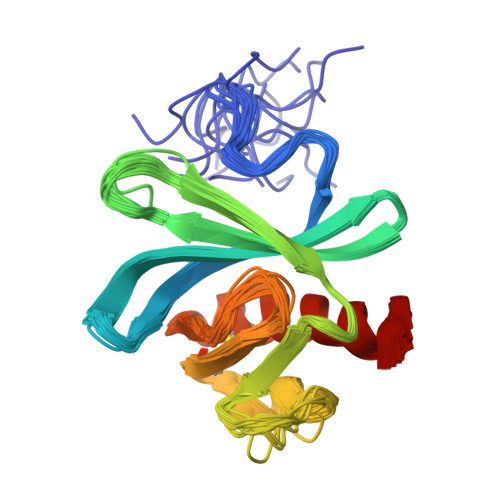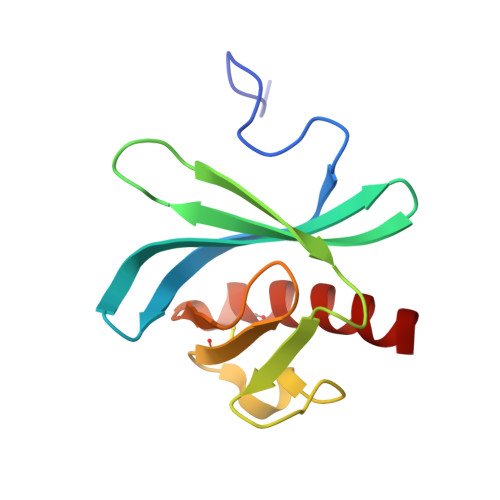A PH domain within OCRL bridges clathrin-mediated membrane trafficking to phosphoinositide metabolism
Mao, Y., Balkin, D.M., Zoncu, R., Erdmann, K.S., Tomasini, L., Hu, F., Jin, M.M., Hodsdon, M.E., De Camilli, P.(2009) EMBO J 28: 1831-1842
- PubMed: 19536138
- DOI: https://doi.org/10.1038/emboj.2009.155
- Primary Citation of Related Structures:
2KIE, 2KIG - PubMed Abstract:
OCRL, whose mutations are responsible for Lowe syndrome and Dent disease, and INPP5B are two similar proteins comprising a central inositol 5-phosphatase domain followed by an ASH and a RhoGAP-like domain. Their divergent NH2-terminal portions remain uncharacterized. We show that the NH2-terminal region of OCRL, but not of INPP5B, binds clathrin heavy chain. OCRL, which in contrast to INPP5B visits late stage endocytic clathrin-coated pits, was earlier shown to contain another binding site for clathrin in its COOH-terminal region. NMR structure determination further reveals that despite their primary sequence dissimilarity, the NH2-terminal portions of both OCRL and INPP5B contain a PH domain. The novel clathrin-binding site in OCRL maps to an unusual clathrin-box motif located in a loop of the PH domain, whose mutations reduce recruitment efficiency of OCRL to coated pits. These findings suggest an evolutionary pressure for a specialized function of OCRL in bridging phosphoinositide metabolism to clathrin-dependent membrane trafficking.
Organizational Affiliation:
Department of Cell Biology, Howard Hughes Medical Institute, Yale University, New Haven, CT 06511, USA.


















